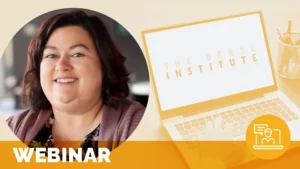Creating Safe Dental Workplaces

Please note, this article contains references to violence and sexual harassment
I remember well that conversation I had with my father. The year was 1998, and I wasn’t sure if I wanted to study journalism or dentistry. “Since you have doubts, do dentistry, because the return is more certain and the profession is beautiful,” my father said. And so I followed his advice, and it’s been almost 20 years that I’ve been in the field of dentistry. He was right, what a beautiful profession! The mouth is an extraordinary organ of the human body.
I was living the golden dream, graduated, with my office set up and my schedule full, faced only with the economic uncertainties of starting a dental practice in a developing country like Brazil. But the unexpected risk to which I was to be exposed was of another type: violence and harassment from one of my patients.
I mistrusted this patient from his first call to the office. The patient, a pleasant man, demanded the last appointment of the day “because of his busy schedule,” and he asked curious questions about the building’s logistics. Once he was in the dental chair and I began to work to fill a tooth, what happened next was all very fast. It’s hard to put into words, put let’s just say the patient had other intentions beyond a dental appointment. I had no training on how to deal with this. I felt exposed, fragile and vulnerable. I was bewildered, confused and filled with a strange kind of shame, maybe guilt. I was his prey and almost became his victim.
We never know what our reaction will be to violence, in this case, sexual harassment. The patient didn’t imagine that behind the kindness of a young and recently–graduated dentist, there was a girl who had grown up among brothers and cousins and whose mother always taught her to be strong. The patient also didn’t know that behind that well-cut white dentist coat there lived a girl who practiced the Brazilian martial art and dance form called capoeira. Yes, I reacted. The initial feeling of fragility gave way to a strong defensive instinct. I threw him out, with voice commands and physical force.
Today, as an experienced dentist, I look back on that experience with less emotion, but this story is actually quite regrettable and unfortunately still a common occurrence today. There is a prevalence of this type of violence toward oral healthcare workers, especially females. One study suggests sexual harassment has been on the rise in parallel with an increase of women in the field.1
No act of violence should go unreported. That same day, I placed a complaint about this patient, and fortunately, he never returned. I insisted that action be taken so he would not repeat the act with any other colleague. Workplace violence, in any form, should not be acceptable in any setting. Personal safety should be a top priority in any professional environment. Unfortunately, many professionals have underestimated the prevalence of violence within dental healthcare centers.1
I share my story to bring awareness to the topic of violence in the workplace and to elevate it as a priority in society. There appears to be limited policies to prevent workplace violence, and it points to a lack of clear definitions of what it is and how to identify it. My story ended with a good outcome because of my own personal experiences and background, but what if it was another young professional with a different profile? What if the next dentist had no background or knowledge for dealing with this situation? Therefore, all healthcare workers, dentists included, must demand zero-tolerance policies from their employers and insist on adherence to strict guidelines as well as comprehensive training programs to combat and eliminate violence–related risks.
And so I return to the conversation I had with my father in 1998 about my choice between dentistry and journalism. Why not both? The journalist soul can make the dentist become a storyteller.
1 Binmadi NO, Alblowi JA. Prevalence and policy of occupational violence against oral healthcare workers: systematic review and meta-analysis. BMC Oral Health. (2019) 19:279. 10.1186/s12903-019-0974-3
Author Bio:
 Isabela Castro has served 7 years in the Brazilian Air Force as a Specialized Dentist and 10 years at United Health Group as a Specialized Dentist/Consultant for innovation and patient experience initiatives. Castro’s experience varies from public, private military hospitals and home care to healthcare operations and management. She’s been involved with quality improvement, risk management and innovation initiatives and is an activist with the worldwide movement What Matters to You? (WMTY).
Isabela Castro has served 7 years in the Brazilian Air Force as a Specialized Dentist and 10 years at United Health Group as a Specialized Dentist/Consultant for innovation and patient experience initiatives. Castro’s experience varies from public, private military hospitals and home care to healthcare operations and management. She’s been involved with quality improvement, risk management and innovation initiatives and is an activist with the worldwide movement What Matters to You? (WMTY).
Isabela serves on The Beryl Institute’s Global Patient and Family Advisory Board as well as on the Planetree International Patient and Family Partnership Council. Castro also serves the Patient Centered Care Community of Practice at International Society for Quality in Health Care (ISQUa). Today she speaks on patient experience issues, blogs and consults in these roles.
Related content
-
 Staff & Provider Engagement
Staff & Provider EngagementCharting Your Path: Elevate Your Patient Experience Career in 2025
COMPLIMENTARY – 12pm ET / 11am CT / 10am MT / 9am PT – As the new year begins, it’s the perfect time to reflect on your professional goals and identify the skills and experiences that will propel your career forward. Whether you’re just beginning your journey in patient experience or aspiring to earn the
Learn more -
 Staff & Provider Engagement
Staff & Provider EngagementTransforming Residents into Patient Experience Champions
This learning bite highlights an innovative approach to integrating patient experience education into a residency program at SUNY Upstate Medical University. Through “Rotation X,” residents engage in “The Voice of the Patient” sessions, gathering insights directly from patients to improve care. Learn how this initiative equips physicians with the skills, knowledge, and tools to enhance
Learn more -
 Staff & Provider Engagement
Staff & Provider EngagementCrisis Averted: Collaborative De-Escalation Strategies for Safer Healthcare Environments
Collaboration within healthcare organizations is crucial for effective care delivery and patient satisfaction, while also reducing workplace violence. Clinical staff must work alongside non-clinical teams to create a supportive network. These collaborations ensure a holistic approach to patient care, ensuring timely support when an individual is in crisis. This learning bite shares techniques for collaborative
Learn more
